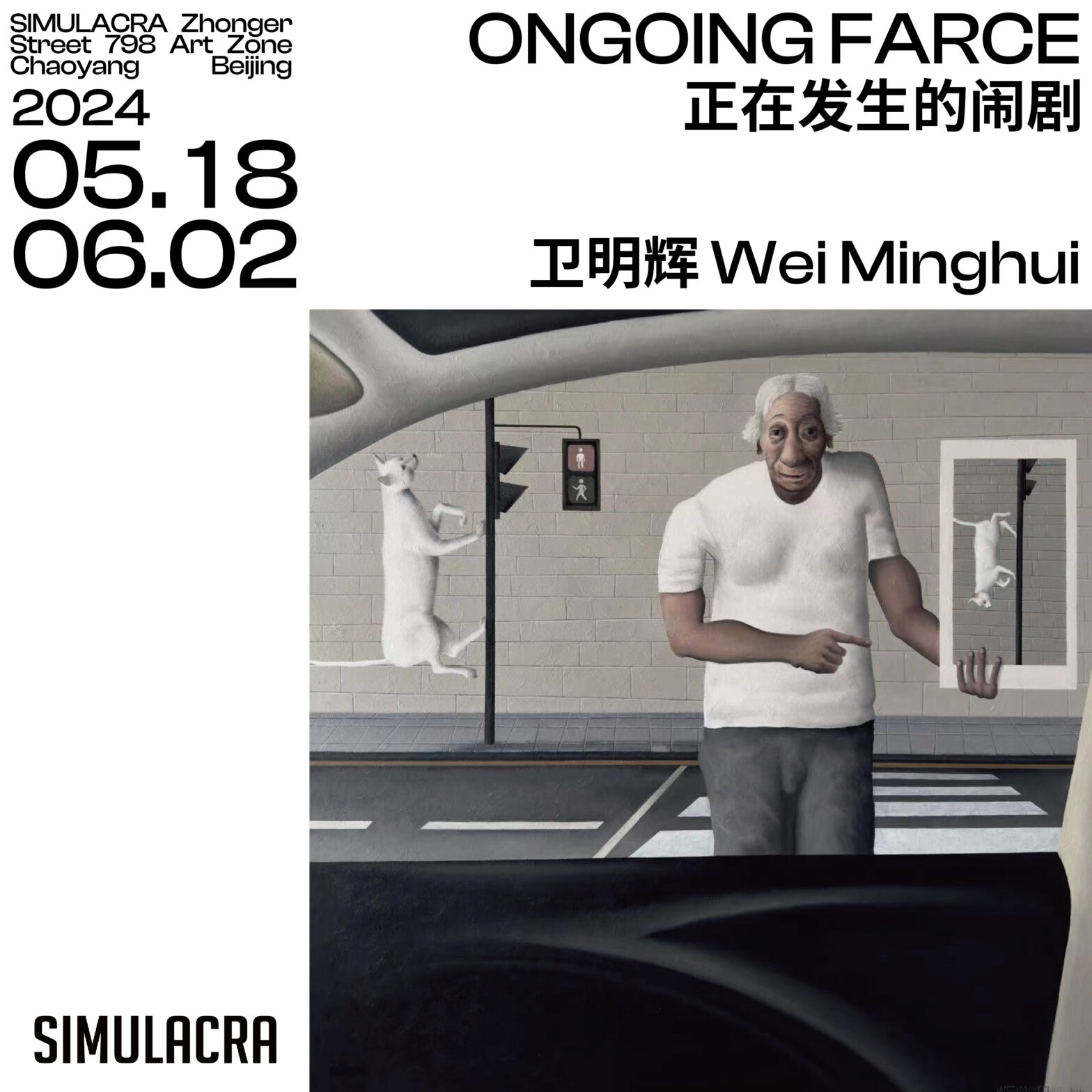
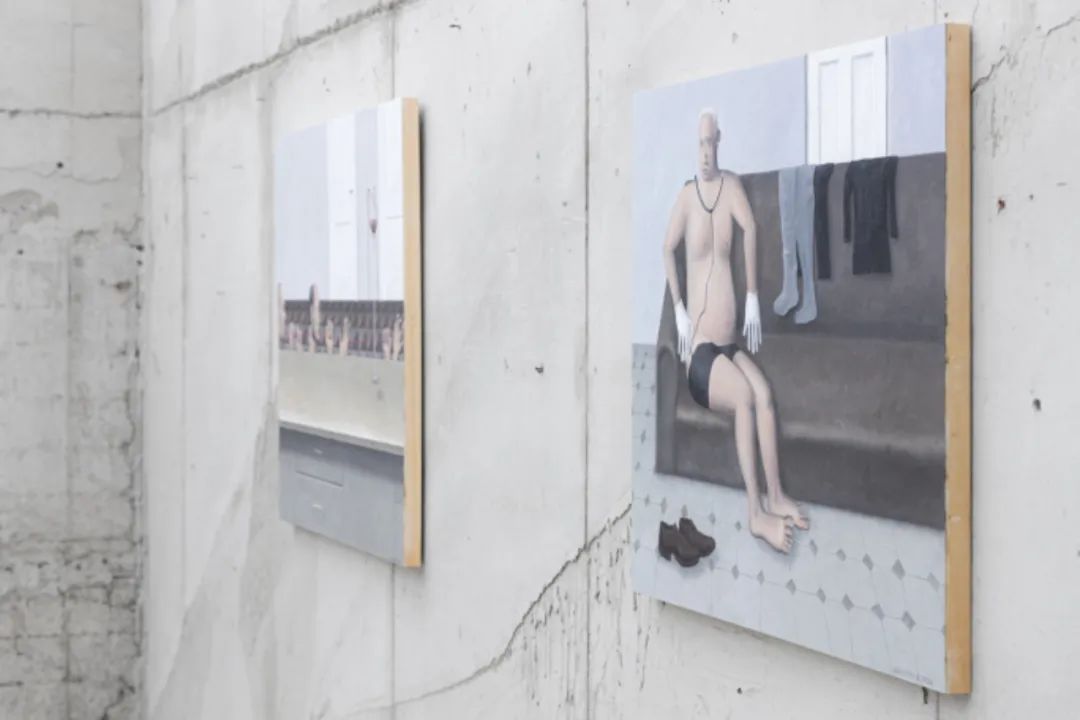
“其实我也画过很多亚洲人,非洲人,甚至有的我自己也不知道是哪里的人……无国界的人。”

卫明辉的创作源于对“现实”的持续观察与记录。捕捉瞬间的“感受”制造预料之外的反转,如同一场“正在发生的闹剧”。
Wei Minghui's creations stem from continuous observation and documentation of "reality." He captures fleeting "feelings" to create unexpected twists, much like a "farce in progress."
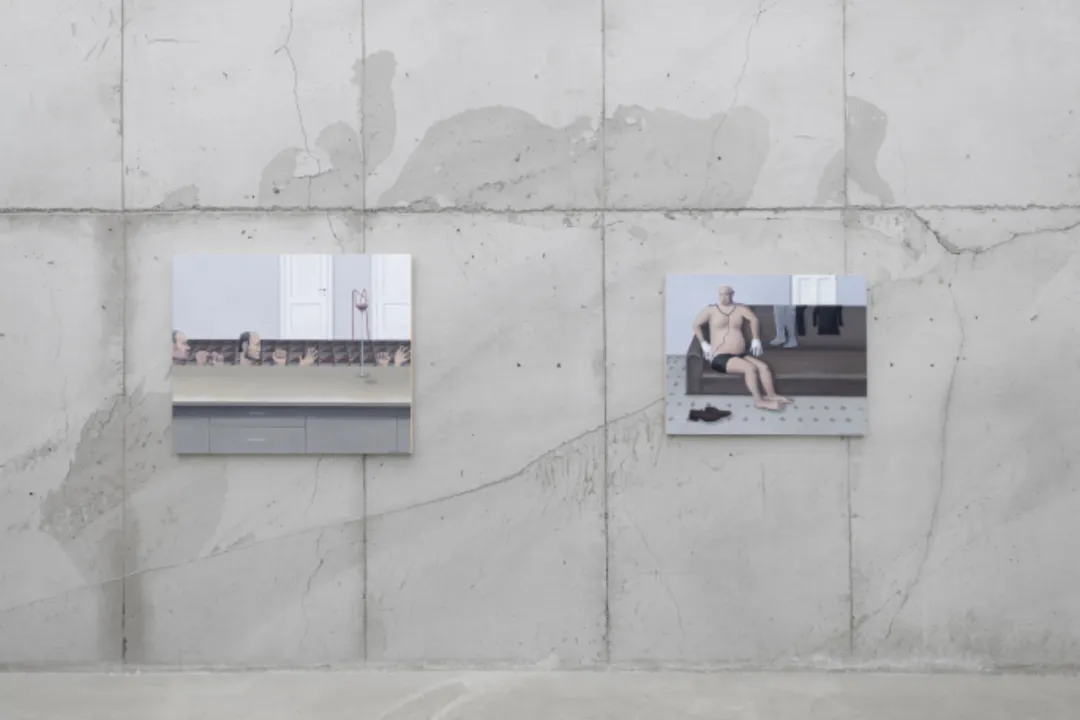
Installation View, Artworks © 卫明辉 Minghui Wei
作品在视觉上表现出一种荒诞超现实主义,通过将人物与动物、家具与裸露的人体置于同一画面中,将杂乱无章的元素组合,设置非常规光影,颠覆我们对“正常”生活的固有期待,产生合理的混乱和怪诞。
Visually, his works exhibit a sense of absurd surrealism by placing humans and animals, furniture and nude bodies within the same frame. By combining chaotic elements and setting unconventional lighting, he subverts our inherent expectations of "normal" life, resulting in a reasonable chaos and grotesqueness.
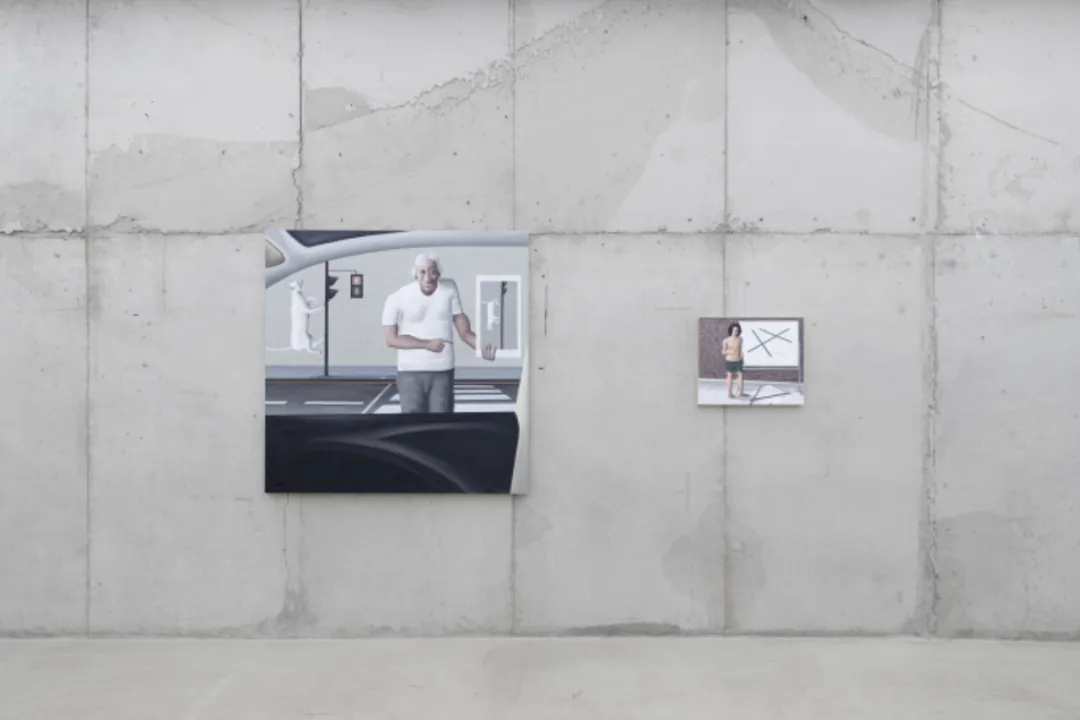
Installation View, Artworks © 卫明辉 Minghui Wei
作品或许只是翻出了现实本身固有的荒谬性。
His works perhaps merely uncover the inherent absurdity of reality itself.
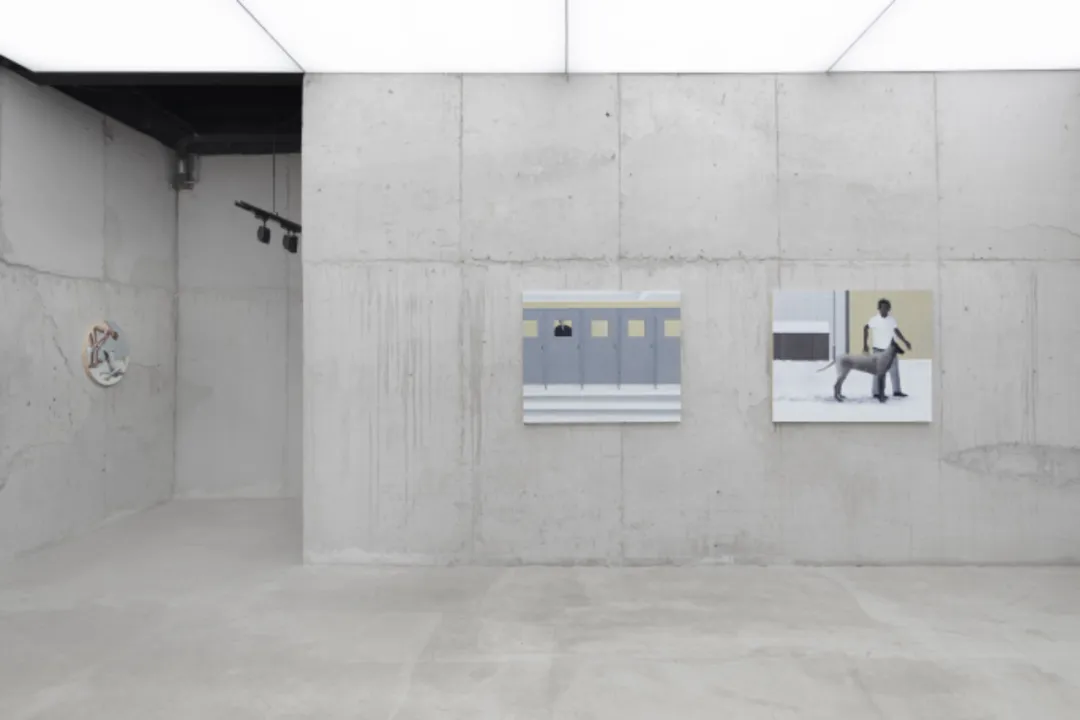
Installation View, Artworks © 卫明辉 Minghui Wei
荒诞不仅作为一种艺术表达手法,更像是工具。通过对日常现象的超现实重塑,挑战大众对现实的既定认知,寻找喘息空间。
Absurdity is not just an artistic expression, but rather a tool. By surrealistically reshaping daily phenomena, he challenges the public's preconceived notions of reality, seeking a space to breathe.

Installation View, Artworks © 卫明辉 Minghui Wei
画面中的人物有着奇怪没有章程的线条畸变,给荒诞中增添一丝诡异,好似真的会这样发生。不知是哪个国家的人、不知是什么品种的狗、概括性的猫这些某凌两可的形象们的组合让观者无可言说,沉浸其中探索。
The characters in his paintings exhibit strange, unstructured distortions, adding a touch of eeriness to the absurdity, as if it could truly happen. The ambiguous figures, like unidentified people, indeterminate dog breeds, and general representations of cats, combine in a way that leaves viewers speechless and immersed in exploration.
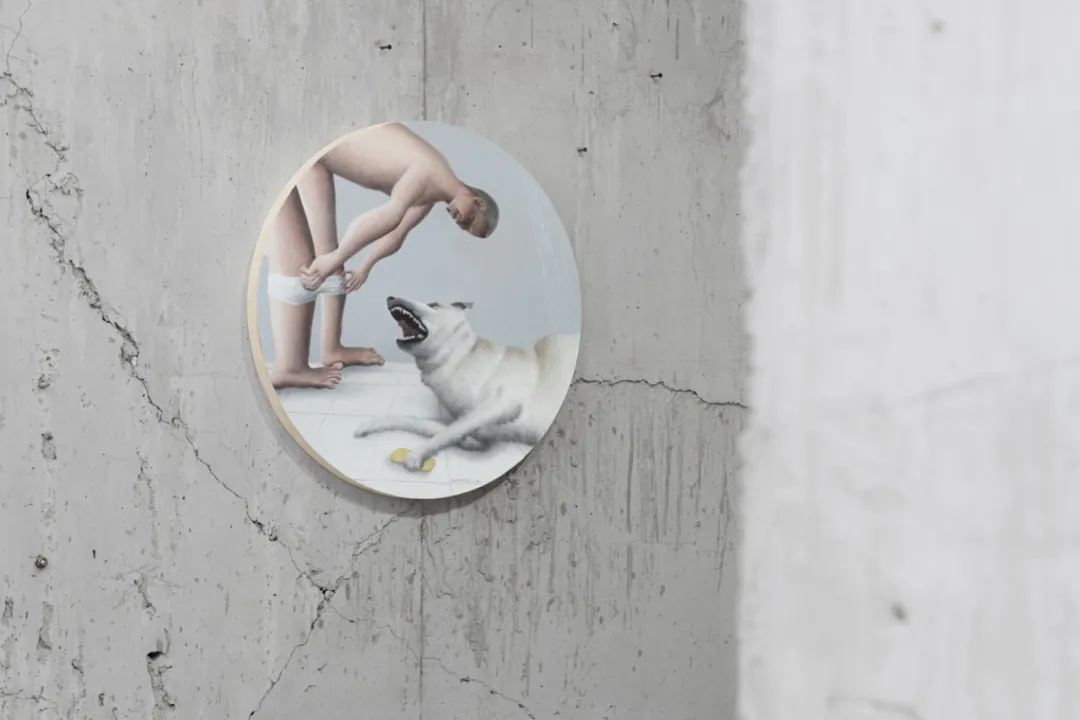
Installation View, Artworks © 卫明辉 Minghui Wei
作品名充满隐喻,给的荒诞场景一个限定,荒唐却似乎合理了。
The titles of his works are filled with metaphors, providing a defined context to the absurd scenes, making the ridiculous seem almost reasonable.
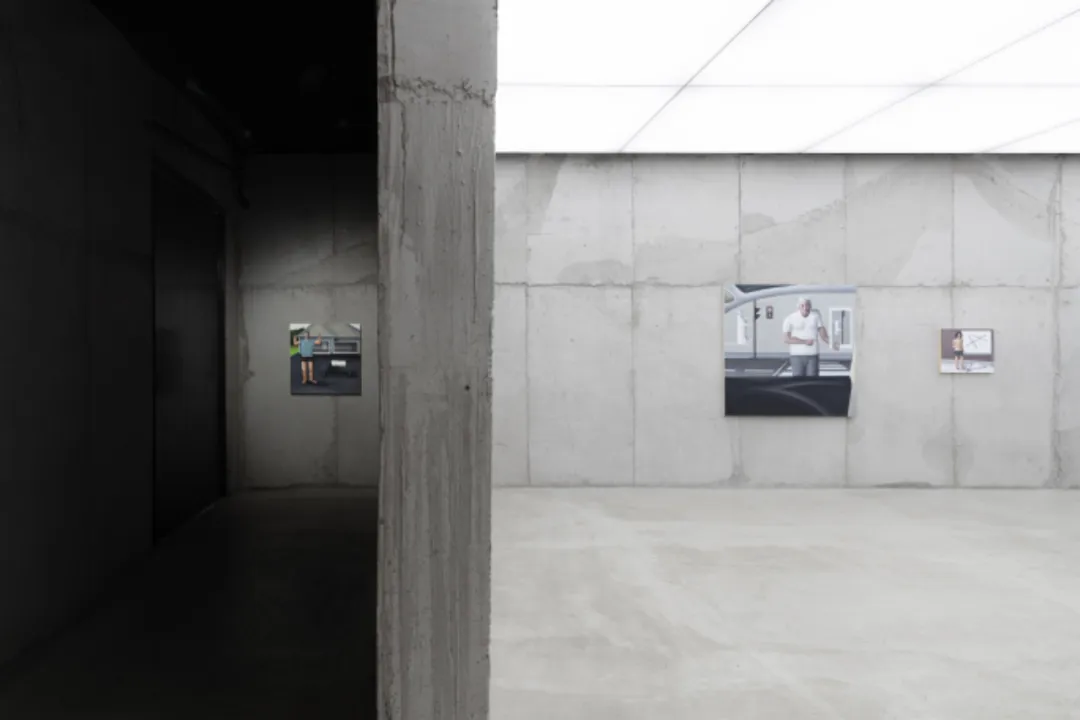
Installation View, Artworks © 卫明辉 Minghui Wei

Q:“正在发生的闹剧”展览的灵感来源是什么?能描述一下“正在发生的闹剧”概念的发展过程吗?
A:首先“正在发生”这个和我最初的创作理念有关,我想记录当下的一切,就像我说的意识形态也算是一种“现实”。我创作的很多事物都是发自生活的体验,并通过人脑的加工,不自觉地形成,这个可能和我平时喜欢遐想也有关系。我觉得一定要感受当下带给你的“感觉”。所以我的作品就是在记录这种感觉。而“闹剧”我觉得是把荒诞的东西现实化了,就像我的作品一样,看起来并非是一种完全陌生的,而是像一场闹剧一样可能下一秒就会发生。
Q: What is the inspiration behind the "Farce in Progress" exhibition? Can you describe the development process of the concept of "Farce in Progress"?
A: Firstly, the concept of "in progress" is closely related to my initial creative philosophy. I want to document everything in the present moment, as I believe that even ideologies count as a form of "reality." Many of the things I create stem from life experiences and are unconsciously formed through mental processing, which might be connected to my habit of daydreaming. I think it's crucial to feel the "sensation" that the present brings to you. Therefore, my work is about recording this sensation. As for the "farce", I see it as a way to materialize the absurd, similar to my works, which, although seemingly familiar, could unfold like a farce at any moment.

Installation View, Artworks © 卫明辉 Minghui Wei
Q:您认为这次展览如何挑战或延伸了您之前的作品?
A:我的作品一直在我最初的基础之上不断更新,这是我一直在做的事情。相比之前的作品而言,我觉得技法和形式上有些改变。首先是形式上不再隆重,这个我最开始创作的很观念化的作品形成对比。其次就是技法上,尽可能地少些平面的感觉,虽然一开始我也不想平面化,但是最后看起来还是很平,尽可能多一些笔触,包括边缘线做些改变等。颜色上也少了一些土色,尝试了更多可能性。
Q: How do you think this exhibition challenges or extends your previous works?
A: My work has always been continuously updated on the foundation of my initial concepts, which is something I've always strived to do. Compared to my earlier works, I feel that there are some changes in technique and form. Firstly, the form has become less ceremonious, contrasting with my earlier, highly conceptual works. Secondly, in terms of technique, I've tried to reduce the flatness as much as possible. Although I initially didn't want my work to look flat, it often ended up that way. I've added more brushstrokes and made changes to the edges, among other things. The use of colors has also shifted away from earth tones, exploring more possibilities.
 Installation View, Artworks © 卫明辉 Minghui Wei
Installation View, Artworks © 卫明辉 Minghui Wei
Q:此次展览中有没有哪些作品你认为是特别重要的?
A:我觉得我的所有作品都挺重要的。这个展览也算是我两个阶段的总结。
Q: Are there any works in this exhibition that you consider particularly important?
A: I think all my works are quite important. This exhibition serves as a summary of two stages of my creative journey.
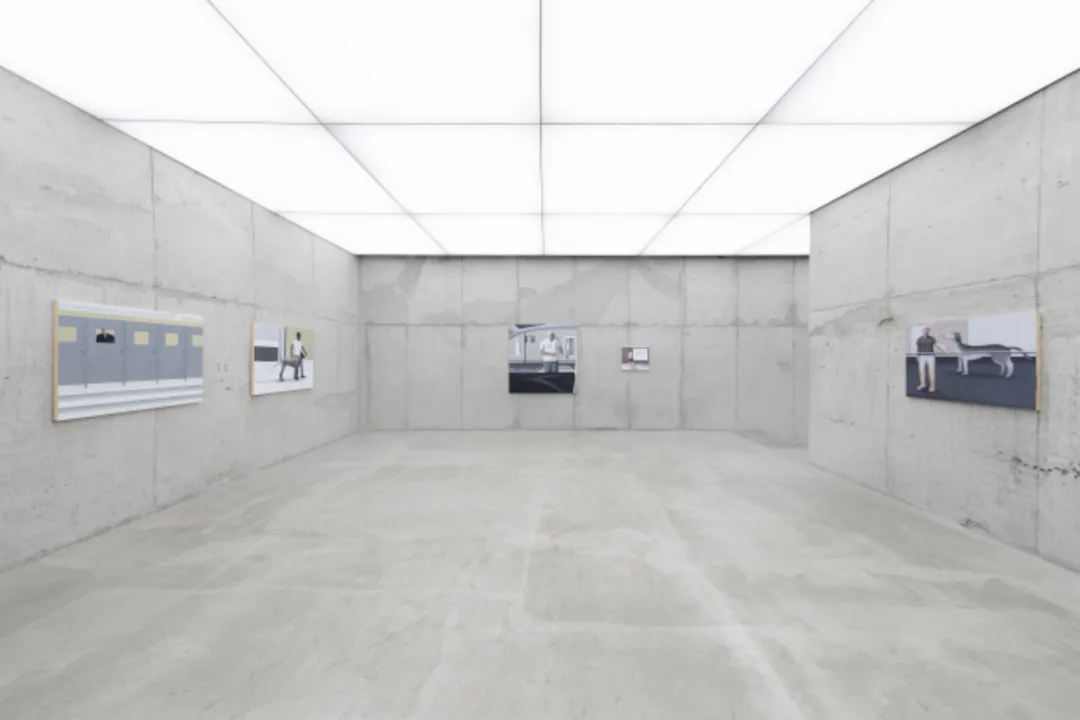
Installation View, Artworks © 卫明辉 Minghui We
Q:在过去的展览中,观众的哪些反馈对您影响最大?
A:问的最多的是,很多人觉得我的作品缺少“本土化”,因为我的作品亚洲面孔比较少。其实我对不同的文化都很感兴趣,我很在意“感觉”。就我而言,我觉得西方面孔和东方面孔给人的感觉是不一样的。我们亚洲人是很内敛的,这和我们的文化也有关系。如果我的作品以亚洲人的面孔来呈现,可能给人的感受是不一样的。而我自身又很喜欢美式幽默,所以可能画的西方面孔会很多。但是也并非如此,可能大家都觉得我只画西方人。其实我也画过很多亚洲人,非洲人,甚至有的我自己也不知道是哪里的人……无国界的人。我的人物形象都是想象着画的,很多是连参考都没有的,不自觉地形成,我觉得这只是一种符号吧。
Q: Which feedback from past exhibitions has influenced you the most?
A: The most frequently asked question is that many people feel my work lacks "localization" because there are relatively few Asian faces in my works. I'm actually very interested in different cultures, and I care a lot about "sensation." For me, Western faces and Eastern faces evoke different feelings. We Asians are very reserved, which is related to our culture. If my work featured Asian faces, it might convey a different feeling. I personally love American humor, so perhaps I paint more Western faces. However, it's not just that; people might think I only paint Westerners. In fact, I've also painted many Asians, Africans, and sometimes people whose origins even I don't know… borderless people. The characters in my paintings are imagined, and many are created without references, forming unconsciously. I see them as mere symbols.
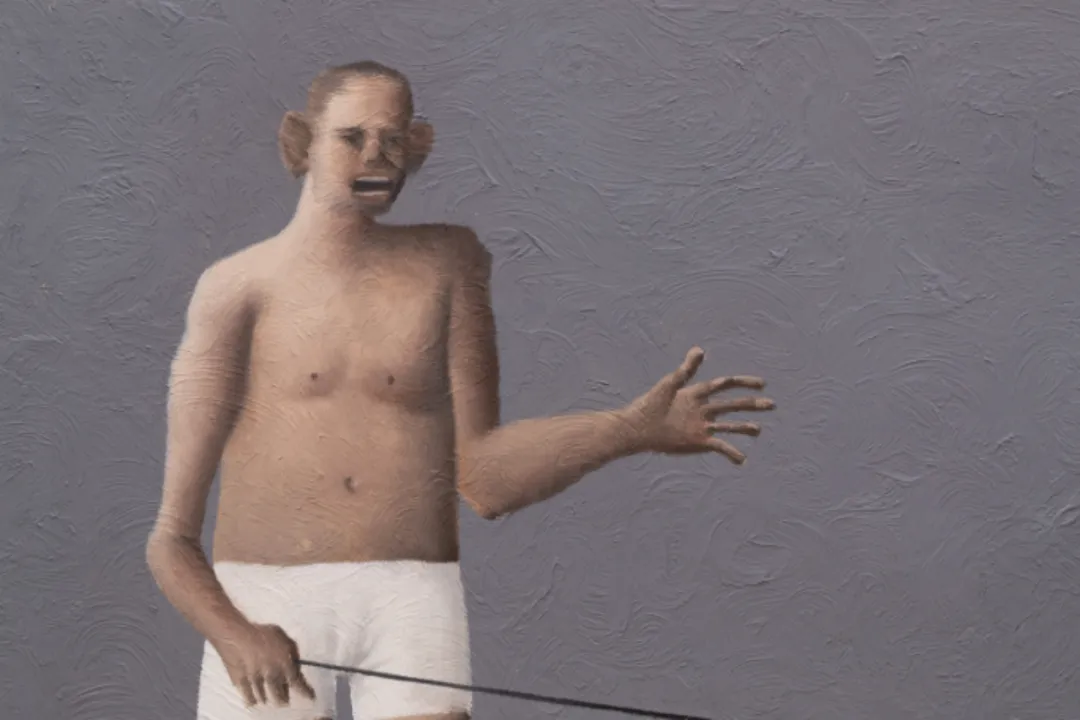
Installation View, Artworks © 卫明辉 Minghui We
Q:在艺术创作中,您如何处理个人与社会主题?
A:我只画我想画的,社会是个大的题材,我会尽可能地以小映大。
Q: How do you handle personal and social themes in your art creation?
A: I only paint what I want to paint. Society is a broad subject, and I try to reflect the larger picture through smaller, personal perspectives.
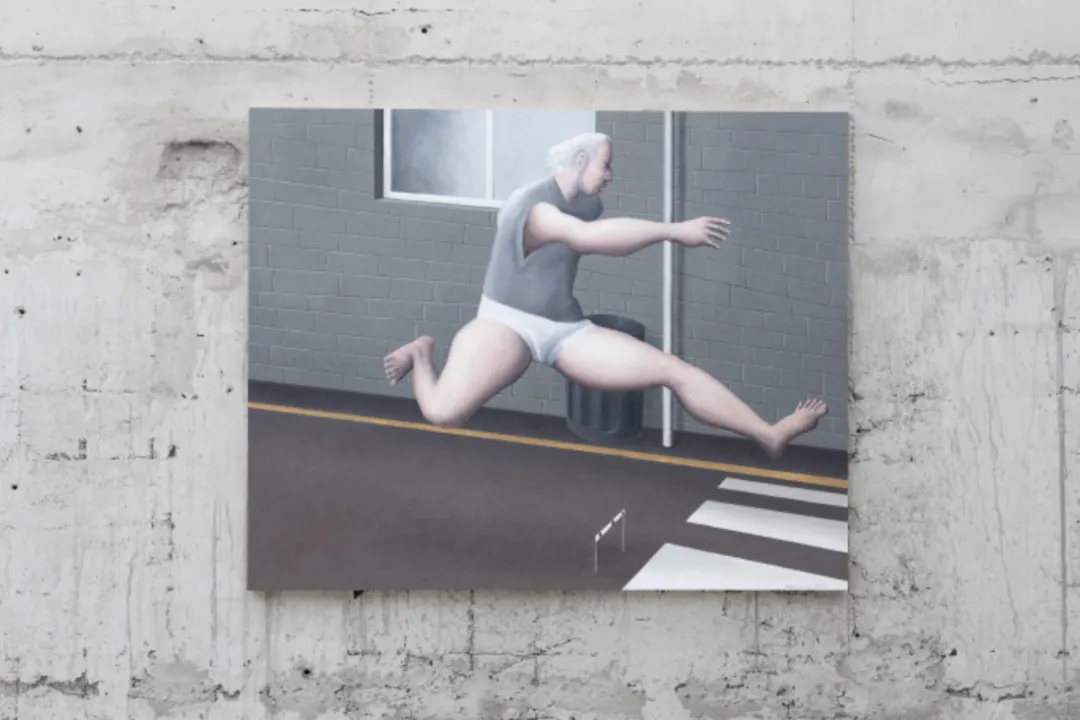
Installation View, Artworks © 卫明辉 Minghui We
Q:有哪些艺术家或作品对您影响最大?
A:玛格丽特吧,我觉得我和他的经历也很像,所以我可以感受到他的作品。其次我也非常喜欢灰色,科尔维尔的作品色彩我也非常喜欢。还有哈默修依,怀斯等等。
Q: Which artists or works have had the greatest impact on you?
A: Magritte, I suppose. I feel that I share a similar experience with him, so I can resonate with his works. I also really like the color grey, and I enjoy the color schemes in Colville's works. Additionally, I admire Hammershøi, Wyeth, and others.
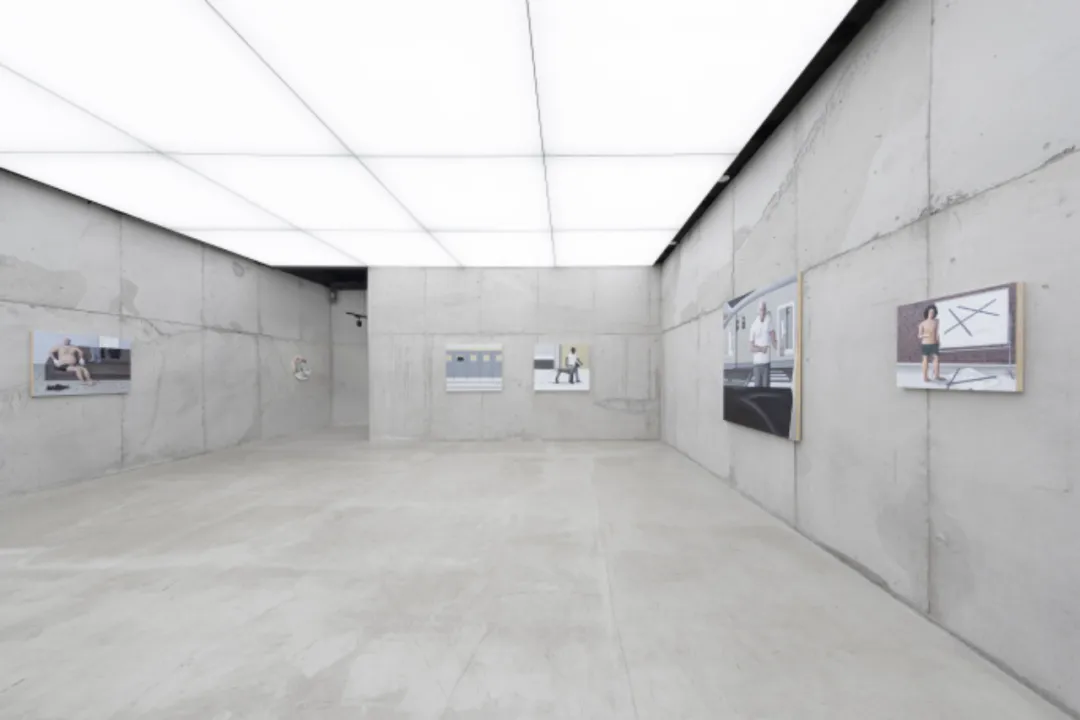
Installation View, Artworks © 卫明辉 Minghui We
Q:在您的艺术实践中,有哪些技术或方法您特别青睐?或者说你的创作方法论中,哪些部分是对您来说非常喜爱的部分?
A:两个问题用一句话回答:喜欢在有肌理的底子上画裸体。
Q: In your artistic practice, are there any techniques or methods you particularly favor? Or which aspects of your creative methodology do you find most enjoyable?
A: I like painting nudes on textured surfaces.
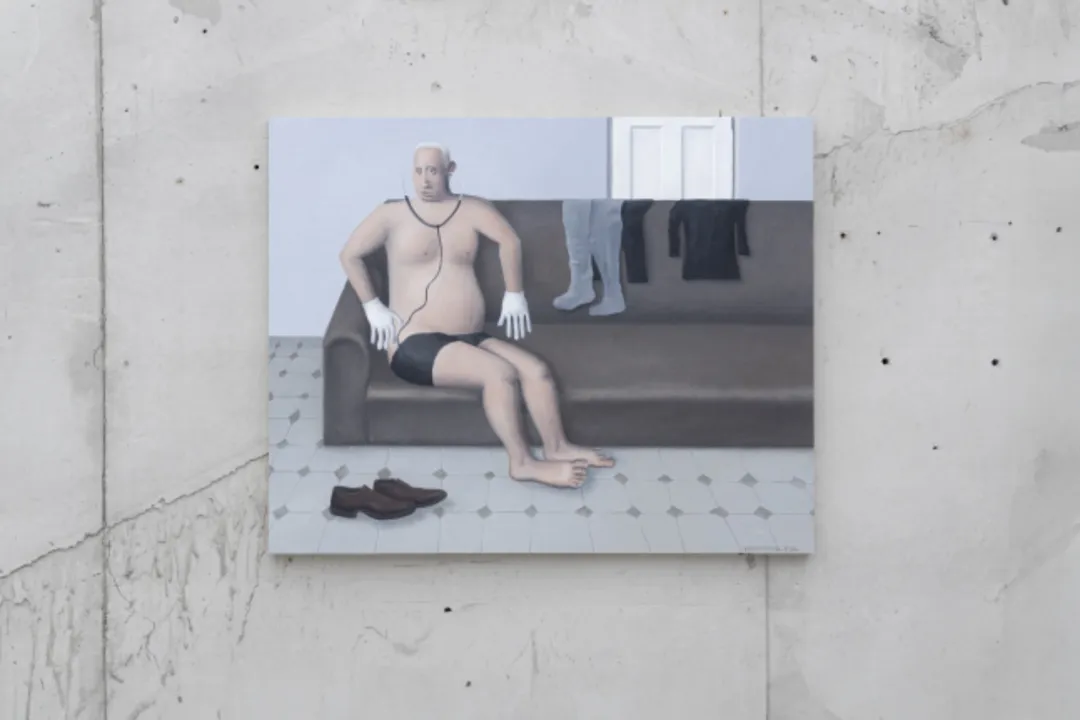
Installation View, Artworks © 卫明辉 Minghui We
Q:在艺术创作和展示过程中,您如何看待创新与传统的关系?
A:我觉得我是那种不太喜欢盲目创新的人,即便我是00后。我看到了很多新一代艺术家太急于创新,做一些看起来很有意思的事,但是本质上还是在延续。大部分都在瞎搞,看完之后并没有太大感受,只是觉得挺好玩。但是也有很不错的。我反正现在只想画一些我感兴趣的东西,我不想去刻意地去创新,如果感兴趣我会去做,不感兴趣即使很前卫我也不会去实现。如果以后有好的灵感,并且我对此很感兴趣,我会毫不吝啬的呈现出来。
Q: How do you view the relationship between innovation and tradition in the process of artistic creation and exhibition?
A: I consider myself someone who doesn't blindly pursue innovation, even though I'm a 00s generation artist. I've observed that many new-generation artists are too eager to innovate, creating things that seem interesting on the surface but are fundamentally continuations of existing concepts. Most of them are just experimenting without much impact; they may look fun but don't leave a lasting impression. However, some are indeed impressive. Personally, I just want to paint things that interest me. I don't want to force myself to innovate. If I'm interested, I'll do it; if not, no matter how avant-garde it is, I won't pursue it. If I have good inspiration in the future and I'm genuinely interested, I'll present it without hesitation.
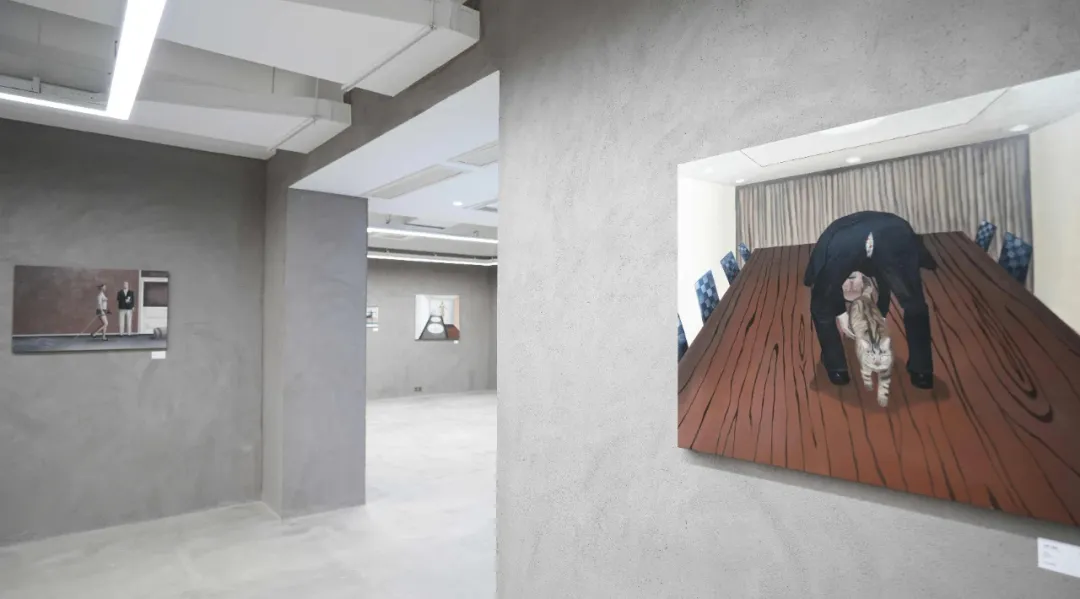
展览现场, 它在试图打破那个水杯, OUTSIDER, 2023 Photo credit@OUTSIDER
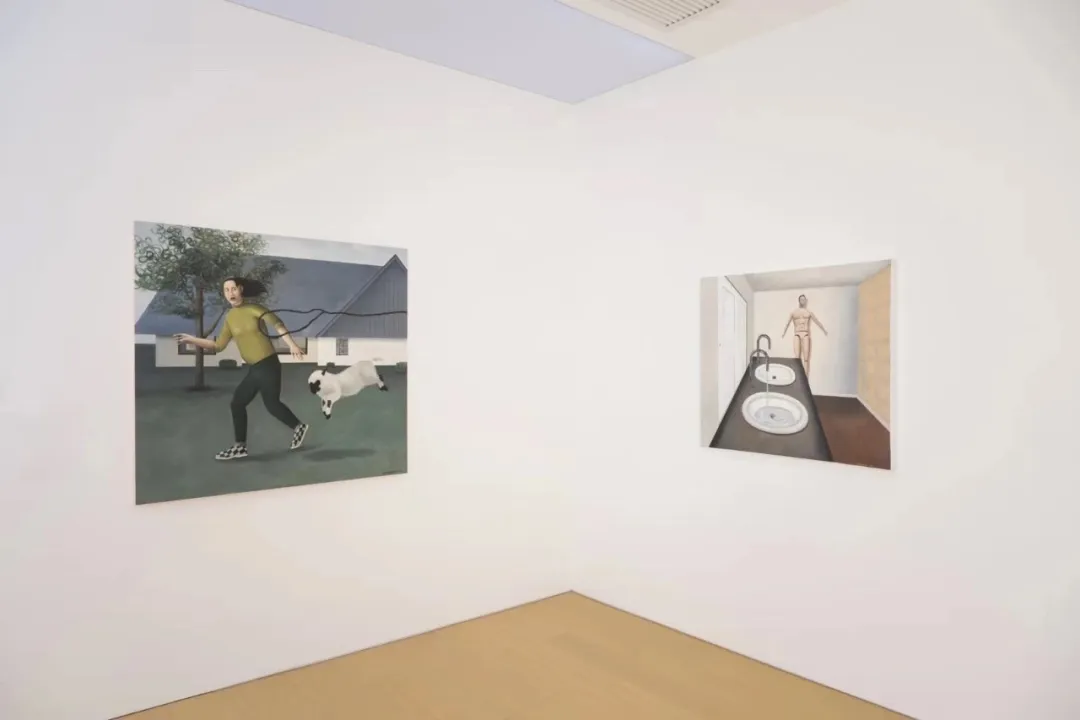
展览现场, 梦之飞鸟, 当代唐人艺术中心, 2023 ©当代唐人艺术中心
©文章版权归属原创作者,如有侵权请后台联系删除
